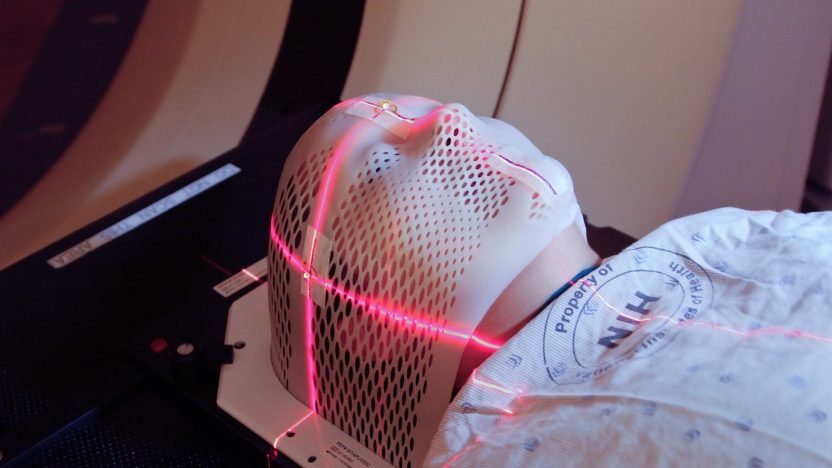Healthcare in the age of precision medicine
A one-size fits all approach to drugs and other treatments will soon become a thing of the past.
by Sumit Jamuar

This year, 2018, marks the 15th anniversary of the draft sequence of the human genome – a milestone in healthcare innovation that took 13 years and $2.7 billion to complete. The Human Genome Project aimed to ‘read’ the DNA sequence of as much of the human genome as was technically possible. And although the Human Genome Project hasn’t immediately brought the genetic revolution that some advocates hoped, it marked a major first step towards realising the ultimate promise of precision medicine.
But what is precision medicine, exactly? Simply put, it means prescribing the right drug, to the right patient, in the right dosage and at the right time, allowing fully customised, tailored treatment based on the genetic makeup of an individual and their disease. In many ways this is nothing new: for centuries, doctors have attuned their care to the individual, taking into account not only the patient but their relatives too, bringing valuable insights from such a personal, one-on-one relationship.
Advances in technology now allow us to take this personal relationship a step further, particularly drawing on genomics: a branch of science that provides us with the ability to read and interpret the genetic ‘instruction manual’ encoded in our DNA. Together with innovative technologies such as artificial intelligence (AI), ‘Big Data’ and machine and deep learning, we are capable of sequencing, decoding, interpreting and analysing DNA in ever more detail. Genomics gives us access to a natural database that allows us to predict an individual’s chance of developing various diseases as well as insights into managing and mitigating those risks. This knowledge is what will eventually lead to fully personalised therapies, meaning longer, healthier and more productive lives.
Some of this knowledge is already being used in current medical practice – for example, in the new generation of molecularly targeted cancer drugs that are designed to hit specific genetic flaws in an individual tumour. In the future, the impact could be truly revolutionary. Doctors may be able to devise tailored gene therapies, adding in functional copies of damaged genes or using gene editing techniques such as CRIPSR to fix faulty ones. To use another example, rather than taking a pill every day for the rest of their life to control a chronic illness, a patient might be able to have a personalised stem cell transplant that regenerates the organ that’s causing the problem.
Looking at the bigger picture, not only does this mean a fundamental change in the quality of life for an individual, it also has systemic implications both in terms of productivity and business models. A significant proportion of global healthcare budgets is invested in the management of chronic diseases. The clearest example here is the US, which allocates roughly three quarters of its $4 trillion budget to this sector alone – yet many therapies provide incomplete disease control or fail to work at all. The full application of personalised medicine, informed by genomic technology, would greatly reduce the costs of healthcare by getting the right treatment to the right patient, first time, leaving more money free to invest in research and innovation.
The idea of personalised treatment leading to longer and healthier lives for people worldwide while reducing healthcare budgets sounds impressive and exciting. But there’s still a long way to go to make this vision a reality. Precision medicine is still in an embryonic phase, and there are several practical, technical and ethical issues that need to be overcome.
One major stumbling block is a persistent bias in current genetic databases, which are skewed overwhelmingly towards white, Western populations. According to a 2016 analysis in the journal Nature Genetics, Caucasians made up 81 per cent of the participants in the world’s genome-wide association studies, which measure relationships between genetic makeup and disease risk. Staggeringly, 60 per cent of the world’s population comprises less than 5 per cent of all the genomic data and insights available.
This means that the data being used to develop and deliver personalised, precision medicine is not fully representative of the global population and is therefore of limited value to the majority of the world’s inhabitants. If we want to make these incredible technologies accessible and available to all, irrespective of where they come from and their ethnic ancestry, we need to be able to analyse a wider spectrum of information, understanding and cataloguing the genetic peculiarities of different populations and ethnicities and mapping them back to health and disease.
This is just the first issue to be addressed in a wider discussion about how to set the guidelines of an ethical framework for precision medicine in the 21st century. As tools and technologies move forward, we need to think now about how to embed diversity into the genetic research frameworks that will form the basis for what will become commonplace medical care in the future. Without this vital step, the genomic revolution could fail to realise its promise of a healthier future for everyone.
Fifteen years have passed since the completion of the Human Genome Project in 2003, where it all started. We can say that precision medicine is currently in the same position the Internet was in 1995: Amazon was newly founded, Google did not exist and devices like iPhones were still the stuff of science fiction. Considering the phenomenal transformations in internet technology and applications that have happened in less than a couple of decades, we can expect the same to happen for precision medicine over the next few years. By ensuring an understanding of the richness and diversity of humanity, we are making sure that these advances truly achieve the promise of genomics and deliver precision medicine for all.


